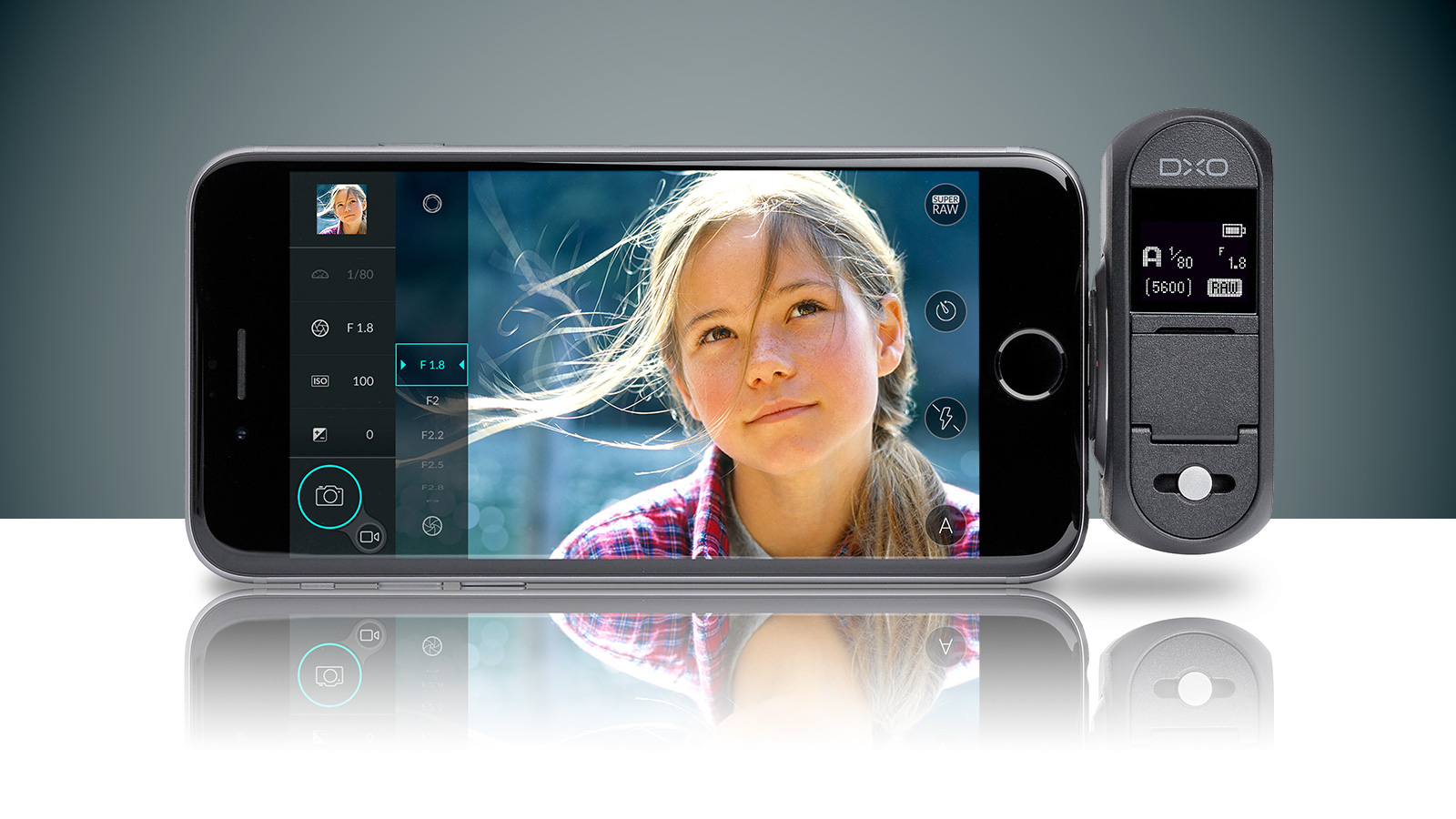DxO's new plug-in camera turns your iPhone into a DSLR (nearly)
DxO is best known for its photo correction and editing software, so its DxO One camera is a bolt from the blue

This isn't the first time someone's tried to make an add-on camera for smartphones. Sony's 'lens cameras' like the QX1 and QX30 clamp on to your phone, connect via Wi-Fi and pair up with your phone in a kind of symbiotic relationship. The camera has the sensor and the lens, but the phone controls it and offers live view and image playback via an app.
More recently, Olympus has released its own Olympus Air A01 product which works in exactly the same way, but this time using the company's Micro Four Thirds system, so that you can use different lenses.
The issue we had with the Sony camera was the sluggishness of the Wi-Fi connection and the effect this had on day-to-day picture taking, but the DxO one won't have any such problem because it just physically plugs in. You get a direct electronic connection and a physical mounting system at the same time.
But what's the point?
The only reason for add-on smartphone cameras to exist is if they massively improve on the camera already built into the phone. Sony's lens cameras do this by offering a big zoom lens (QX30) or a big sensor for better quality (QX1).

The DxO One takes a slightly different approach. It relies on a much bigger sensor than the iPhone, a 20-megapixel 1-inch back-illuminated device of the type found in some serious, high-end compact cameras like the Sony RX100 and Canon G7 X. It also has a fast f/1.8 lens and small, neat body that fits the iPhone design rather well.
This bigger sensor should deliver better resolution, better dynamic range and better noise control at high ISOs than the iPhone camera – not to mention 2.5 times as many pixels.
DxO likens the quality to a DSLRs, which seems a trifle optimistic given that a typical DSLR's APS-C sensor is around three times larger, but DxO's expertise in image optimization, processing and correction could help close the gap.
Get daily insight, inspiration and deals in your inbox
Sign up for breaking news, reviews, opinion, top tech deals, and more.
The DxO One doesn't have a zoom lens, though. The fixed 32mm lens offers roughly the same angle of view as the iPhone camera, but it has a maximum aperture of f/1.8. This won't just make it better in low light – in combination with the larger sensor it should be capable of some nice shallow depth of field effects.
How it works
Take a look at our DxO One hands on review to see what we thought of the camera when we tried it out at DxO's press launch. We weren't able to test the picture quality, but the way it handles and connects to the iPhone seems well thought out.
The DxO One can be used as a standalone camera in fully automatic mode, but to get the full range of controls, live view and playback, you need it to be connected to your iPhone. It's actually a very powerful camera, with full program AE, aperture-priority, shutter-priority and manual exposure modes, full HD movies and the ability to shoot raw files as well as JPEGs.
The DxO one isn't cheap at £499/US$599, but this is no novelty iPhone accessory – it's a serious high-end compact camera designed for photographers who want to explore the potential of connected smartphone photography without the limitations of a smartphone camera.

Rod is an independent photographer and photography journalist with more than 30 years' experience. He's previously worked as Head of Testing for Future’s photography magazines, including Digital Camera, N-Photo, PhotoPlus, Professional Photography, Photography Week and Practical Photoshop, and as Reviews Editor on Digital Camera World.